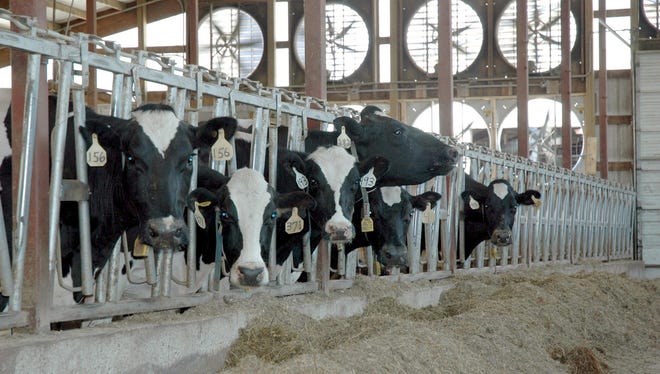Any heat stress abatement is better than nothing

Heat stress in dairy cattle is something we acknowledge as both a major animal welfare concern and an economic loss to the dairy. Strategies to minimize heat stress can be confusing. This is partly due to animals in different parts of the country and world experiencing varying levels of heat stress as well as performance variance among certain types of heat abatement systems in different environments.
Although the ideal system for heat abatement may vary depending on the region where your dairy is located, prioritizing groups of animals and deciding which components of a heat abatement system will provide the biggest return on investment can help simplify what may seem like a daunting task.
Heat stress consequences
Signs and consequences of heat stress can vary in severity, when they appear in relationship to heat stress events, and how long they last. Some consequences of heat stress are quite subtle and, therefore, make it harder to realize the full animal welfare impacts and economic ramifications.
A cow’s optimal environmental temperature is between 40 and 60 degrees F. Both temperature and level of humidity contribute to the effects of heat stress. After just a few hot days, it is not uncommon to see milk production losses of 5 to 15 pounds of milk per cow day. Sometimes greater losses of milk production can be seen depending on the severity of the heat stress.
Although this loss can be quite dramatic and have very significant economic impacts, it often is just the tip of the iceberg. Other consequences of heat stress can include lower dry matter intake, milk fat depression, reduced pregnancy rate, cows calving early, calves with low birth weight, and compromised immune systems, resulting in increases of retained placentas, metritis, and mastitis.
Additional consequences may appear later or be less obvious, such as increases in lameness that often show up two months after the onset of heat stress and continues for months after the end of heat stress. Calves that were born during heat stress have also been found to produce less milk as lactating cows than those that were not born during heat stress.
Because of these welfare and economic issues, we put a lot of focus on how best to minimize heat stress in dairy cattle.
Heat abatement – where to start
A lot of factors go into designing heat abatement systems for dairies, which require a solid understanding of your facilities and environment. Here are some very common areas that we can focus on to help us prioritize where to start.
Holding pens: Holding pens tend to be the hottest area on dairies and providing heat abatement in the holding pen is often one of the easiest and most economical places to start. One thing to keep in mind when considering adding sprinklers to the holding pen is that, without proper ventilation, you could make things worse by adding humidity and turning the holding pen into a sauna.

Cow groups: We often see a high return on investment for heat abatement systems for transition cows (both prefresh and post-fresh) and high-producing cows. Transition cow cooling can help reduce metabolic diseases and improve start-up milk. Cooling high groups can help improve reproduction and peak milk.
Exit lanes: Exit lanes are another area where it can be very economical and beneficial to add cow cooling.
Once you feel you have adequate heat abatement in these areas, you may look to other lactation groups, the parlor, and other cattle-handling areas where you may also be able to improve cow cooling and/or employee comfort.
What makes the most sense for your farm?
To decide where to start, look at all the areas on your farm that could benefit from heat abatement systems and start prioritizing. For some farms, the first priority may be the area with the biggest potential return on investment. For others, it may be the area that requires the least investment or is the simplest to implement. Regardless of the system’s complexity, doing anything to alleviate heat stress in cattle is better than doing nothing at all.

Dr. Andrew Kniesly joined Vita Plus in 2014 as a dairy specialist in Ohio.